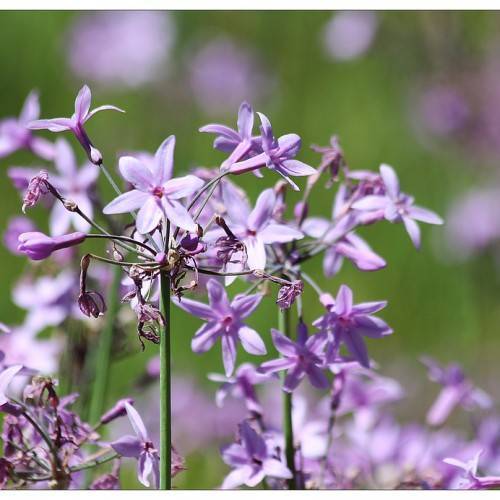
society garlic
Tulbaghia violacea
Cycle:
Herbaceous Perennial
Watering:
Average
Hardiness Zone:
7 - 10
Flowers:
Flowers
Sun:
full sun
Leaf:
Yes
Growth Rate:
Low
Maintenance:
Low
Drought Tolerant:
Yes
Salt Tolerant:
Yes
Tropical:
Yes
Care Level:
Medium
watering
Society garlic (Tulbaghia violacea) requires moderate amounts of water throughout the growing season. During the warmer months, water the soil deeply and evenly at least once a week. During cooler months, water less frequently, allowing the soil to become almost dry between waterings. If the leaves start to wilt, water the plant immediately. Try to water at the base of the plant to reduce the likelihood of fungal disease. If the weather is particularly dry, increase the watering frequency to twice a week.
sunlight
Society garlic (Tulbaghia violacea) requires at least 5 to 6 hours of direct sunlight each day, but prefers full sun with 8 to 10 hours of direct light each day. From late spring to midsummer, Society garlic should be protected from too much heat and intense sunlight. During this period, some afternoon shade may be beneficial. The plant should receive at least 4 hours of light in winter, but a longer period is preferable.
pruning
Society garlic (Tulbaghia violacea) should be pruned lightly in late winter or early spring to promote a healthy, compact form and remove any dead or damaged stems. Pruning should also be done after flowering, when the blooms have faded, to encourage a more abundant display of flowers in the next season. It is best to prune no more than 1 third of the top growth at once, and to select older stems that are less likely to flower the following year. Pruning should be light and judicious to avoid over-pruning and to keep the plant looking its best.
